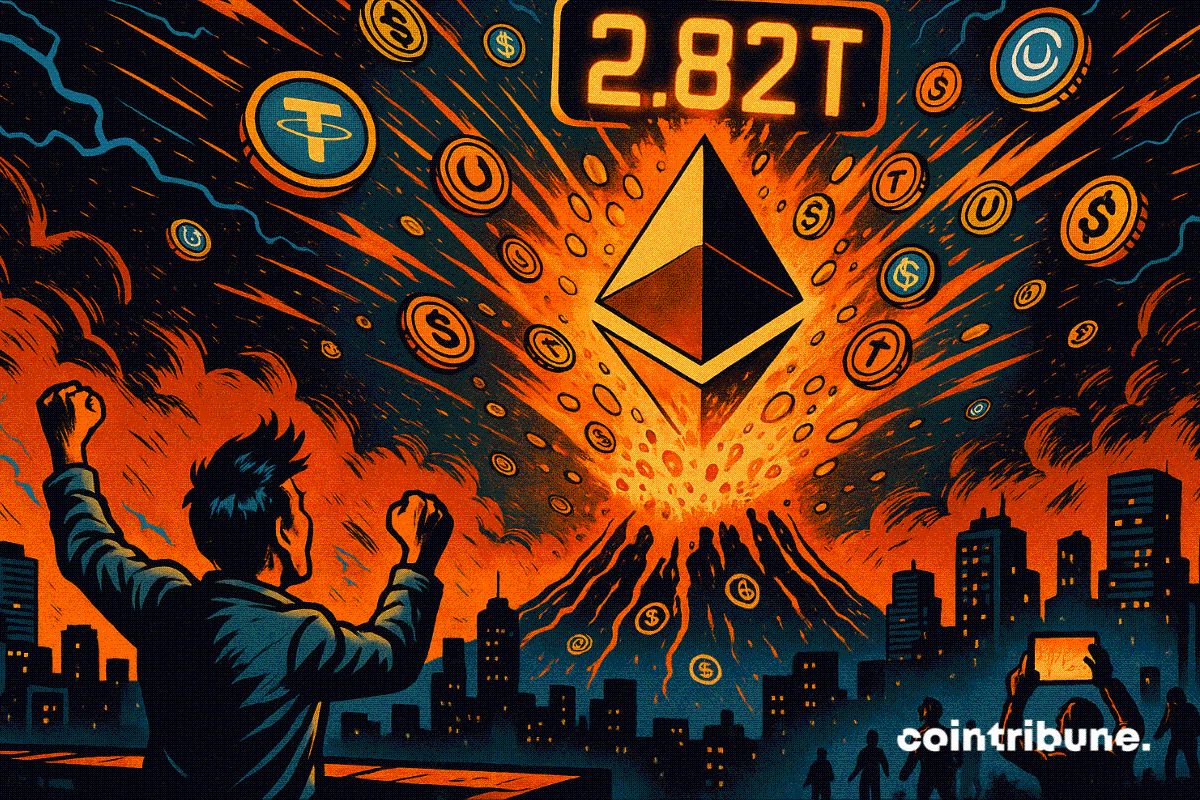Stellar (XLM) Falls 8.2% as Smart Contracts Expand and November Patterns Emerge
- Stellar (XLM) fell 8.2% in 24 hours amid November trends but shows strong fundamentals with 700% smart contract growth and $5.4B RWA volume. - Protocol 23 upgrade boosted scalability to 5,000 TPS, while partnerships with remittance providers and banks drive institutional adoption and low-cost transactions. - Historical backtests reveal XLM typically rebounds 5.3% within 5 days post-crash, though gains fade after 10 trading days due to market volatility. - Analysts highlight Stellar's real-world utility,
As of November 3, 2025,
Throughout November 2025, Stellar (XLM) has demonstrated heightened network activity and growing institutional interest, fueled by a 700% increase in smart contract usage, $5.4 billion in real-world asset transactions, and a historical average return of 58%. These factors point to a significant transformation within the ecosystem and indicate the possibility of notable price growth. The introduction of Protocol 23 has boosted the network’s scalability, now supporting up to 5,000 transactions per second. This upgrade is essential for managing large transaction volumes and facilitating international financial operations.
Stellar’s blockchain has achieved substantial progress in smart contract implementation, with a 700% rise over the last year. This growth is matched by $5.4 billion in real-world asset volume, highlighting Stellar’s expanding influence in the tokenization of tangible assets like real estate and commodities. These assets can now be traded and are liquid on the
Collaborations with international remittance companies and established banks have further propelled Stellar’s adoption. These partnerships allow for affordable, nearly instant transactions, with monthly volumes reaching into the millions. Developer engagement has also risen sharply, with more than 200 new projects introduced to the ecosystem this quarter. This surge demonstrates Stellar’s focus on regulatory compliance and interoperability, drawing in financial institutions looking for dependable blockchain platforms.
Laura Chen, a blockchain analyst at the Stellar Development Foundation, pointed out that Stellar’s emphasis on practical use cases distinguishes it from other projects that rely heavily on speculation. This pragmatic strategy has resulted in a 150% jump in daily active addresses, reflecting authentic user participation rather than mere trading activity. As regulatory frameworks become clearer worldwide, Stellar’s integrated features for asset creation and multi-currency transactions are likely to attract more institutional investors, which could help stabilize XLM’s market position.
Technical analysis also indicates a possible change in Stellar’s market trajectory. The price chart has broken out of a five-year downward trend, suggesting improving investor sentiment and the potential for renewed strength. Experts believe these changes are consistent with historically strong November performance, when XLM has averaged 58% gains.
Backtest Hypothesis
An event-driven back-test was conducted on 44 separate instances of at least a 10% drop in Stellar (XLMUSD.UDC) between January 1, 2022, and November 1, 2025. The analysis showed that after significant declines, XLM typically exhibits a mean-reversion pattern within three days, with average cumulative returns turning positive by the fifth day, reaching 5.3%. The strategy’s advantage is most evident within the first week, with success rates ranging from 48% to 59%. However, after two weeks, the performance compared to a buy-and-hold approach diminishes, with the advantage disappearing by the 30th day.
This analysis indicates that while XLM often recovers quickly after steep declines, the benefit is mainly short-term, lasting up to about 10 trading days. Holding the asset for longer periods may erase these gains, as the buy-and-hold strategy tends to outperform. This pattern is consistent with the high volatility seen in the crypto market, where sharp price changes are frequently driven by sentiment rather than fundamental value shifts.
Disclaimer: The content of this article solely reflects the author's opinion and does not represent the platform in any capacity. This article is not intended to serve as a reference for making investment decisions.
You may also like
Solana’s Vibhu Challenges Ripple to a Live Debate Over On-Chain Data and Real Network Adoption

Ethereum Monthly Stablecoin Volume Hits $2.82 Trillion in October, Setting New Record

Courts Mandate Trump to Provide SNAP Funding, Preventing the Use of Hunger as a Tool
- Federal judges in Rhode Island and Massachusetts ordered the Trump administration to use emergency funds to continue SNAP benefits during the government shutdown, preventing aid suspension for 42 million Americans. - The administration claimed insufficient funds, but plaintiffs highlighted $28.25 billion in available reserves, challenging the legality of halting aid. - Courts deemed the suspension "unlawful," emphasizing the government's duty to use existing tools, while the USDA plans to appeal, risking

Bitcoin Down 6% as Ethereum, Solana, Dogecoin, and Cardano Suffer Heavy Losses
